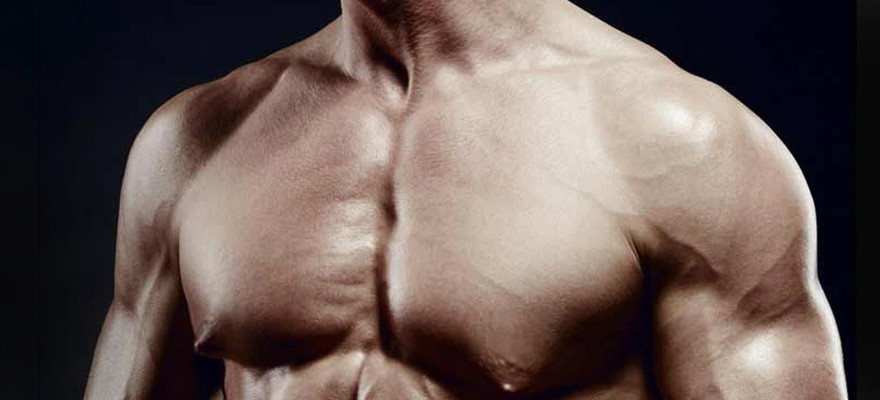Gynecomastia among bodybuilders: myths and reality
- Hits: 638

Almost all athletes from gym have heard about gynecomastia and have seen this problem many times. The reason is the regularity of the problem among bodybuilders. The disease is a benign, unnatural enlargement of the mammary gland in men. The direct cause is hypertrophy of adipose tissue and glands.
Most often, the development of gynecomastia is characteristic of those bodybuilders who take anabolic steroids. However, the meaning of the problem is broader. Gynecomastia is a consequence of metabolic disorders in the body. This means that the condition is not unique to bodybuilders. It can be a consequence of obesity, transitional age in adolescents and any diseases that are accompanied by a decrease in testosterone levels in the body and an increase in estrogen production.
Gynecomastia is often known as gyno disease by bodybuilders and is considered one of the most undesirable phenomena. Enlarged mammary glands disrupt body proportions and interfere with competition.
Every athlete wants to prevent this process. However, not all of them know the characteristics of the disease. There are many myths around gyno that need to be ruined in order to choose the right prevention strategy. Gynecomastia is better prevented than treated. Let's talk about this further.
Stages of gynecomastia
There are three main forms of gynecomastia, each of which has its own characteristics and requires a different approach to treatment.
- Developing stage. A reversible initial stage of gyno that lasts for four months.
- Intermediate stage. Most often it does not require surgery, but treatment becomes more difficult. It develops within 4-12 months.
- Fibrous stage. Gyno becomes a neglected problem, and you can get rid of it only after surgery.
Gyno myths
There are several common gynecomastia myths that may seem plausible. However, they have no connection with reality in practice. The following should not be taken seriously.
- Exercise and physical activity are not catalysts for the development of gynecomastia. Even if the athlete does not take steroids, the risk of developing the disease is individual. It depends on the hormonal aspects in the body. Some may have a problem, others may not.
- Regular use of sports nutrition does not lead to disease. Exceptions are hormone-based nutrition.
- Gyno has a nature that is not related to malignant tumors. There is no risk of developing breast cancer.
- If the problem has arisen long after the last course of taking steroids, then steroids have nothing to do with the onset of the disease and the roots of the problem should be looked for elsewhere.
The real state of affairs
The development of gynecomastia is caused by the use of steroids. Steroids disrupt metabolic processes in the body if taken alone. can comprehend not only beginners, but also experienced bodybuilders who’s taking part in competitions and taking courses on anabolic steroids.
Anabolic steoroids are testosterone derivatives that, after entering the bloodstream, are exposed to aromatase and are converted into estrogens (female hormones). Aromatase is an enzyme that is synthesized by the adrenal glands. If there is a lot of estrogen in the male body, then gyno is one of the external results of the inner processes. The solution to this problem is the use of aromatase inhibitors (like Arimidex bodybuilding tablets) while taking steroids.
It's worth noting that not every anabolic steroid used by bodybuilders causes gynecomastia. Some steroids have a tendency to aromatize and must be used carefully. Other drugs are not susceptible to the aromatase enzyme, and they do not stimulate an increase in the level of estrogen in the body and the growth of gyno.
Prevention and treatment of gynecomastia
The use of estrogen receptor blockers on the course of anabolic steroids can prevent the gyno. For example, the active ingredient anastrozole is suitable for prophylaxis. Anastrozole contained in a wide-known Arimidex 1 mg. It interferes with the production of estrogen.
The sensitivity to estradiol is different for each athlete, so gynecomastia in bodybuilders doesn’t grow as often as is commonly believed. A well-designed course program, prevention, post-cycle therapy, regular monitoring of hormonal levels can reduce the risks of developing gyno to a minimum.
There are various ways to prevent the appearance of gynecomastia in bodybuilding, but the problem can only be cured by surgery. Surgical intervention does not leave too noticeable marks and allows you to return to training in 2 weeks. Full recovery takes 1-2 months. The second appearance of gyno is possible, but is rare.
In any case, we recommend taking care of your health, using drugs correctly and excluding even the first occurrence of gyno. Anastrozole tablets will help you.

 EN
EN
 DE
DE  IT
IT  FR
FR 
 Add to Cart
Add to Cart






